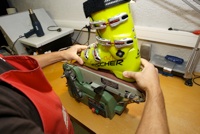TheBootroomChamonix
2009/2010
Performance Optimisation
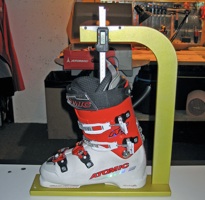
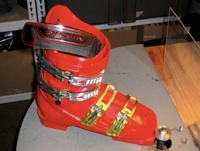
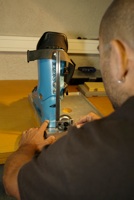
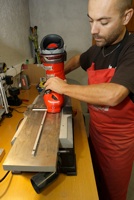
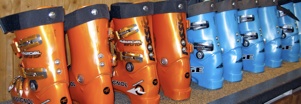
After the necessary custom modifications have been made and the boot is comfortable, now is the time to optimise all the factors that have an influence on the way the boot works. This is a crucial part of the set up process and can have a significant effect on performance.

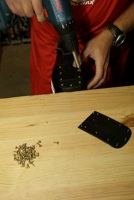
Lifter Plates
Where possible we can add lifter or riser plates to the bottom of the boot, this increases leverage and edge grip and diminishes the risk of boot out on steeper slopes. These are available in different thicknesses. Once these are added the upper part of the front and rear binding lugs must be returned to the D.I.N. norm.
Verification of F.I.S. Rules
F.I.S. rules state that from the bottom of the heel to the base of the boot, the distance must not exceed 43mm. We have a specially built gauge to measure this and avoid any surprises ! This distance governs the exact thickness of lifter plates that we can add to the boot.
Returning to D.I.N. norm.
Using a router to cut back the boot.
Trueness of the boot sole
For a high performance boot it is important that the sole is completely flat and true before checking cuff alignement. A extra long flat bed sander is the tool used here and the results are checked on a marble once finished.
Canting and cuff alignement
This is a crucial part of the set up and can make an enormous difference for many athletes. The cuff angle can be changed for either anatomical or performance orientated reasons. We can also change the angle of the lower shell using wedges or a specially built sole planer accurate to 0,5°. Extensive on snow testing is also an intrinsical part of the process.
Choice of shell stiffness
Racing boots come in many different stiffness and this has a direct effect on the skiability of the boot. Power and energy is more efficiently transmitted by a stiffer boot but the skier must be able to flex the boot correctly, if not they will find themselves constantly in the back seat and have difficulty controlling their skis. We can advise on shell stiffness and either stiffen or soften the plastic as deemed necessary. Sometimes we will also use a different stiffness of plastic for the upper and lower parts of the boot.
